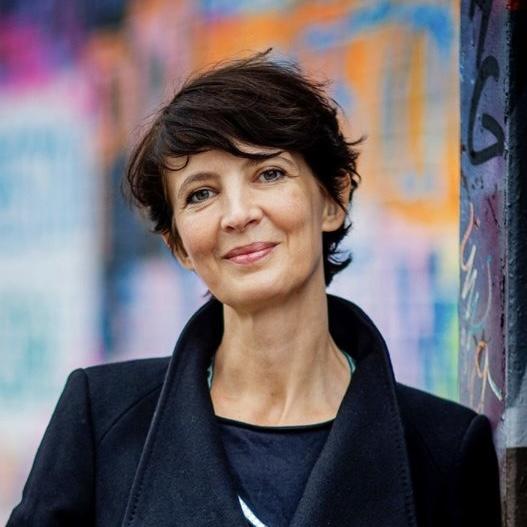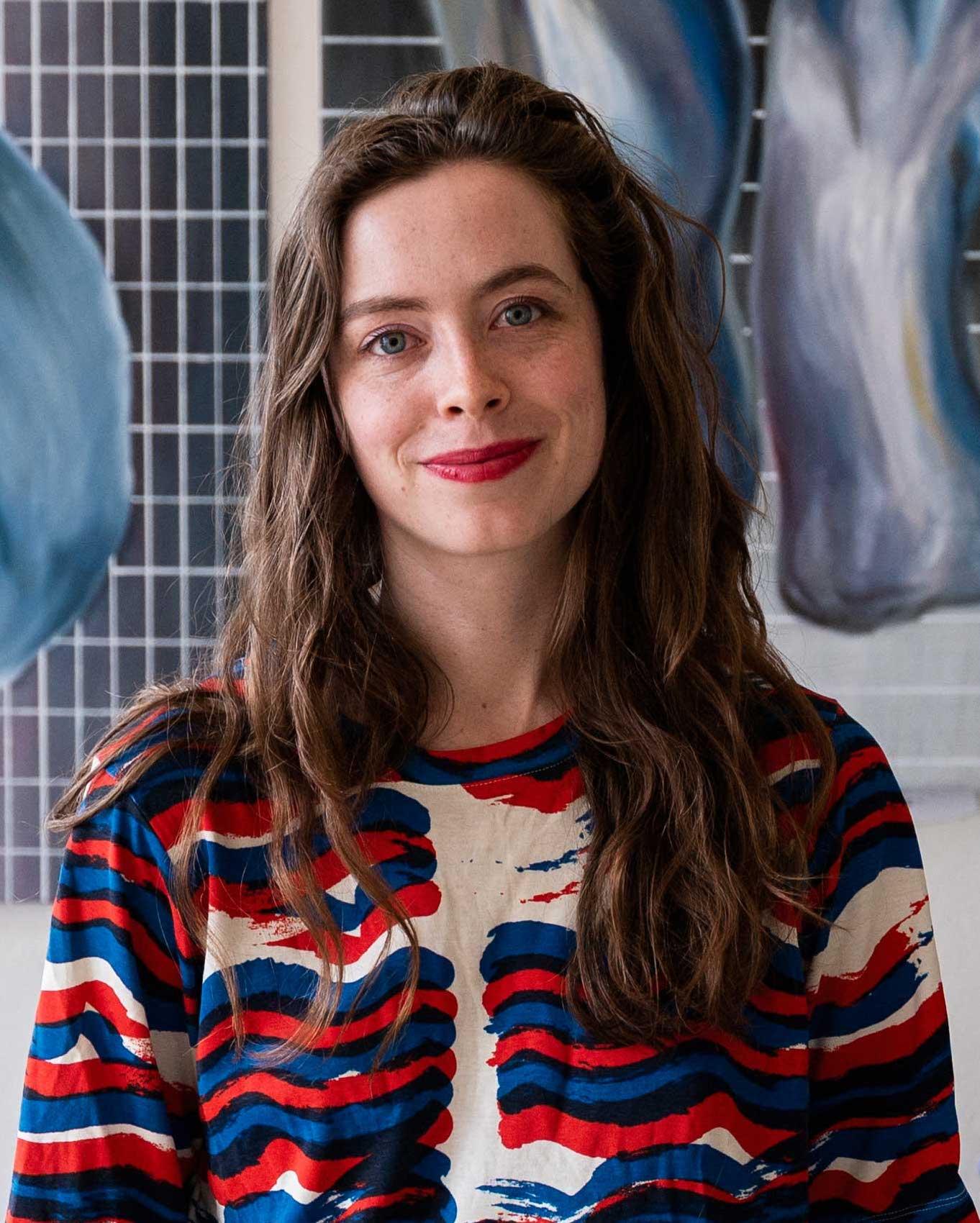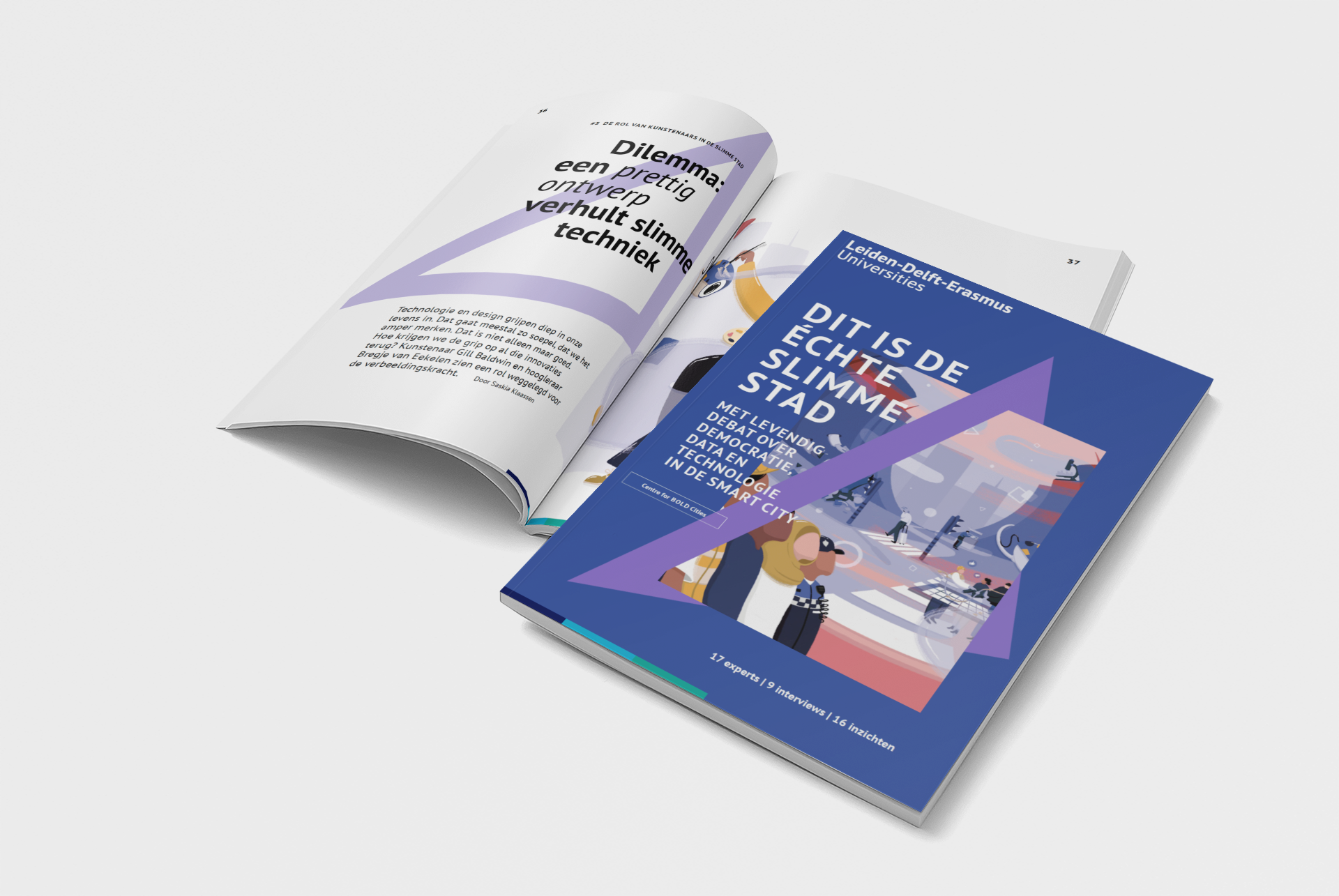Last June, we published our White Paper titled: 'This is the real smart city', (Dit is de echte slimme stad) in which scientists and practical experts discuss smart cities, citizen participation and governance related themes in duo interviews. In the coming months, these interviews will be published separately, on both the Leiden-Delft-Erasmus website (in English and Dutch) and on our own website (in English only).
This month: Bregje Van Eekelen, professor of design, culture, and society at TU Delft, and visual artist Gill Baldwin in conversation about design, technology, and imagination in the city.
Dilemma: a nice design conceals smart technology
Technology and design are intervening deeply in our lives. This usually happens so smoothly that we barely notice it. That is not all good. How do we regain our grip on all these innovations? Artist Gill Baldwin and professor Bregje van Eekelen see a role for the imagination. By Saskia Klaassen
The dilemma of a good design
The next generation of public transport gates will be designed by people who are now her students at TU Delft, says Bregje van Eekelen. They are becoming increasingly aware of the surveillance society that they are not only shaping, but that is shaping - and tracking - their own lives as well. Van Eekelen examines how design choices allow you to mindlessly walk past such a public transport gate and barely see surveillance cameras. As a result, you hardly realize that your movements are being recorded and you can be held accountable for this afterwards. 'This way, designers deliver a user-friendly product on the one hand, but they fail to consider that, on the other hand, they deprive users of awareness of the presence of technology by doing this.'
Designers deprive users of the awareness of the technology present"

It is happening all too fast
In fact, you can see all of history as a succession of technological changes, Van Eekelen argues. 'As soon as people become aware of the impact of such a change, the question follows: do we want this? And the observation that it is all happening too fast.' But returning to an innocent society is not an option. 'The problem with technology is that it shapes and facilitates our lives in ways we can't quite imagine.'
Van Eekelen refers to an artwork by Kate Crawford and Vladan Joler, Anatomy of an AI system. 'They unravelled an AI system, the Amazon Echo, by depicting what it takes to make it function. From energy and mineral resources to cheap labour. Crawford sees AI as one of the biggest political, cultural and social changes in history, a shift of which most people are unaware.' According to Van Eekelen, Crawford's work shows how we are intertwined with the world in ways beyond our imagination. And that takes place through the most banal daily activities, for example grocery shopping, receiving your salary or working from home during a lockdown.
The artist can wake us up
So the designers who make the technology of a smart city acceptable and user-friendly are actually concealing that same technology. This allows technology to interfere, unnoticed, more and more in our lives. The exposure of technology in social systems is a major theme in the work of artist Gill Baldwin. In 2020, she created the interactive audio tour in Rotterdam, There is Something I’ve Been Meaning to Ask You. In it, residents can be heard talking about the surveillance society. Like filmmaker and artist Dorothy Cheung, who sees striking parallels between Rotterdam and her native Hong Kong. 'The difference is that China is open about this, while citizens in the Netherlands are not at all aware of anything,' Baldwin explains. 'They still think the government is open and transparent and has the best intentions.’

During the audio tour, you will also hear architect Beatriz Pero talk about her experience with cameras in Lima. At that point in the tour, you as listener stand in an alley, heavily monitored with multiple forms of camera surveillance. Baldwin also did an experiment with students. 'I asked them to map how they’re tracked during a single day. From the public transport gates in the underground to the apps they use on their phones. This turned out to be much more extensive than they thought. They even shared their location with roommates, something that would be unthinkable for me.'
I asked students to map how they’re tracked during a single day."
To design for society is to let go of power
Digital applications designed to be 'easy' and, therefore, to be as 'imperceptible' as possible on the one hand, and critical artists who want to expose that hidden design again on the other. As a city, how do you find a middle ground that ensures that residents both know what is going on, and can also easily use technological applications? Van Eekelen: 'If you design for society instead of the individual user of a gate, you are faced with a challenge: who is this society? How do you address it?'
Van Eekelen too often sees standard solutions. Policymakers, scientists or designers head into the city to talk to residents - they bring the lab to the city. 'But that is not structural participation. People live somewhere for decades, while living labs like that last four years at most. Sherry Arnstein, an expert in participatory decision-making, already called such projects tokenism in 1969: a symbolic effort that appears to involve citizens but in which they have no real say.’
In her research, Van Eekelen rarely finds that the power and control of design are completely transferred to citizens. 'Why is that? I think we have not given much thought to what then becomes the role of the designer, the civil servant or the scientist.' It may also be caused by a lack of imagination. 'We can't imagine how to hand over the reins.'
Subtle disruption leads to new insights
Baldwin thinks designers and scientists are not yet ready to hand over so much control to smart city residents. 'It takes an ego death, a passion to really step aside. Even for many artists and art institutions, this is still a bridge too far.' Baldwin herself tries to subtly disrupt with her work, tilting the perception of everyday things. In the Impossible Bodies series, she draws, paints and sculpts shapes vaguely reminiscent of body parts, but which Google's AI does not recognise as such. 'By imagining points of view other than that of humans, you arrive at new insights. It's a way of thinking that flips everything on its head.'
Van Eekelen thinks designing researchers can also contribute specifically to imagining a user-friendly smart city. 'It takes imagination and intelligence to imagine the entangled world we already live in - so that we can relate to it and make democratic choices. Designing researchers, through a kind of counter-surveillance, can put that world on the radar and make a suggestion for a truly intelligent, creative, and inclusive design of the city.'
As a visual artist, Gill Baldwin studies our relationship with the artificial. She maps the consequences of the ever-changing kinship between humans and (technological) artificiality.
Bregje van Eekelen combines methods from cultural anthropology and history to understand the connection between present, past, and future. She is professor of Design, Culture, and Society at TU Delft and was doubly appointed as Leiden-Delft-Erasmus professor at Erasmus University Rotterdam in 2023.
De white paper 'Dit is de échte slimme stad.' is op 22 juni 2023 gepresenteerd tijdens de conferentie Op (weg) naar de echte slimme stad in Den Haag. De White Paper is hieronder te lezen of kan als Pdf worden gedownload. Liever als papieren uitgave lezen? Bestellen kan via deze link en dan sturen wij u een gratis exemplaar op.

